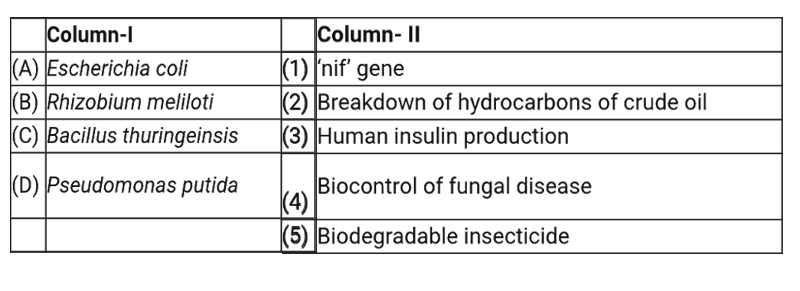If A∩B⊆C and A∩B≠ϕ. Then which of the following is incorrect (1) (A∪B)∩C ≠ϕ (2) B∩C=ϕ (3) A∩C≠ϕ (4) If (A−B)⊆C, then A⊆C
(AcupB)capCcancel=phi
B∪C=ϕ
AcupCcancel=phi
If (A−B)⊆C, then A⊆C
The correct Answer is:B
To solve the problem, we need to analyze the given options based on the condition that A∩B≠∅ (meaning A and B have some common elements) and A∩B⊆C (meaning all elements that are common to A and B are also in C).
Let's go through each option step by step:
Step 1: Analyze Option (1) (A∪B)∩C≠∅
- Explanation: The union of A and B includes all elements that are in either A or B. Since A∩B⊆C and A∩B≠∅, it follows that there are elements in C that are also in A or B. Therefore, the intersection (A∪B)∩C must also contain elements and cannot be empty.
- Conclusion: This statement is true.
Step 2: Analyze Option (2) B∩C=∅
- Explanation: This option states that there are no elements in common between B and C. However, since A∩B≠∅ and A∩B⊆C, there must be at least some elements in C that are also in B (specifically, those elements that are in A∩B). Thus, B∩C cannot be empty.
- Conclusion: This statement is false.
Step 3: Analyze Option (3) A∩C≠∅
- Explanation: Since A∩B⊆C and A∩B≠∅, it follows that there are elements in A that are also in C (specifically, those elements that are in A∩B). Therefore, the intersection A∩C must contain elements and cannot be empty.
- Conclusion: This statement is true.
Step 4: Analyze Option (4) If (A−B)⊆C, then A⊆C
- Explanation: The statement (A−B)⊆C means that all elements of A that are not in B are in C. However, this does not necessarily imply that all elements of A are in C, since there could be elements in A that are also in B (and thus not included in A−B). Therefore, A could have elements that are not in C.
- Conclusion: This statement is false.
Final Conclusion
From the analysis above, the incorrect options are:
- Option (2) B∩C=∅ is false.
- Option (4) If (A−B)⊆C, then A⊆C is also false.
Since the question asks for which of the following is incorrect, the answer is:
Option (2) is incorrect.
- Conclusion: This statement is true.
- Conclusion: This statement is false.
- Conclusion: This statement is true.
- Conclusion: This statement is false.
- Option (4) If (A−B)⊆C, then A⊆C is also false.
Topper's Solved these Questions
Similar Questions
Knowledge Check
Which of the following is equivalent to (2b3c2+b2c)−(b3c2−b2c−4bc)?
A0Bb3c2Cb3c2+2b2cDb3c2+2b2c−8bc
Let A,B and C be sets such that ϕ≠A∩B⊆C. Then which of the following statements is not true?
View SolutionIf A and B are two sets, then A∩(A∪B)' is equal to - A (b) B (c) ϕ (d) A ∩ B
View SolutionIf A={1,2,3,4},B={3,4,5},C={1,5,6}, then findof the following :
(i) A∪B
(ii) A∪(B∩C)
(ii) A−B
(iv) A−(B∪C).
View Solutionwhich of the following is/are true for
Δ=∣∣ ∣ ∣∣a21a+c0b2+1b+c0b+cc2+1∣∣ ∣ ∣∣ ?
View SolutionIf A,B and C are three sets such that A∪B=CandA∩B=ϕ, then prove A=C−B.
View SolutionThe number of carbon atoms in first CO2 acceptor A molecule and the first stable product B molecule in C3 cycle is
(a) A- 2C, B - 3C
(b) A- 3C, B - 4C
(c) A-5C, B-3C
(d) A-3C, B-5C
View SolutionMatch the following and choose the correct combination from the options given :

(a) ABCD3154
(b) ABCD1234
(c) ABCD2134
(d) ABCD3152
View Solution
